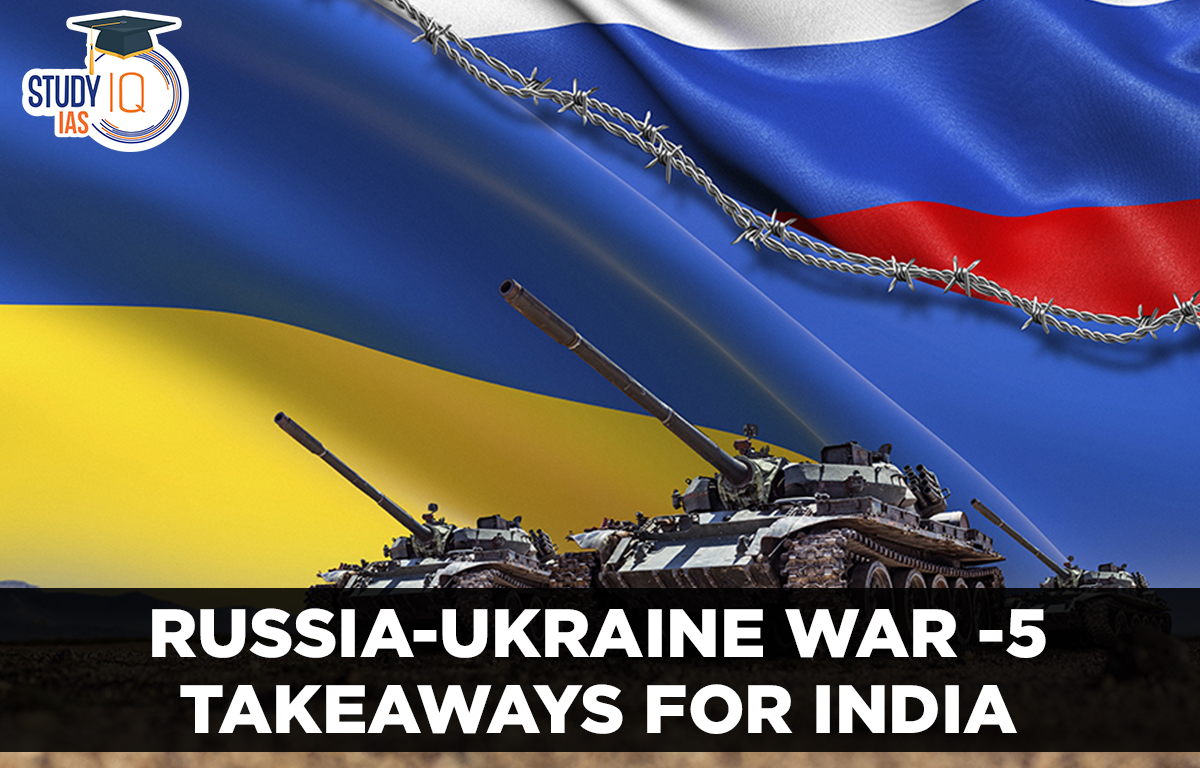Table of Contents
Context: Russia-Ukraine war completed one year on February 24, 2023.
About the Russia-Ukraine Conflict
- Russian troops invaded Ukraine from the north, east and south of the country.
- It targeted the capital Kyiv, Kharkiv in the northeast, Donbas in the east, and the southeast of the country, along a swathe of territory reaching across to Crimea.
- The 2014 Crisis: Conflict between Ukrainian forces and Russia-supported rebels in Crimea, DPR and LPR, claimed nearly 14,000 lives.
- Russia then annexed Crimea and a series of sanctions followed, handing blows to the Russian economy.
- Objective of Invasion: An operation to demilitarise Ukraine.
- To prevent the US-led NATO from gaining a foothold in Ukraine.
- According to United Nations Human Rights Commission, a total of 7,199 civilians lost their lives in Ukraine till February 13, 2023. The number of injured is close to 11,800.

Integrated Battle Groups (IBGs)
- IBGs are self-contained, agile, brigade-sized fighting units.
- IBGs are to perform both offensive roles, involving cross-border operations, and defensive roles to withstand an enemy attack.
- The integrated units for the border will be all-encompassing, with artillery, armoured, combat engineers and signal units.
- They are to replace the current Cold Start Doctrine, which called for defensive corps to carry out shallow cross-border thrusts within 72 hours for limited objectives such as the capture of territory.
Five Major Tactical take-ways from the Conflict for India’s Military
- Self-sufficient in defence: India need to have a defence industrial ecosystem that will keep supplies going rather than be at the mercy of another country in case of a war.
- India needs to have an ecosystem in place so that the flow of supplies is constant.
- Servicing of damaged military equipment, for fast-tracking the repairs in the middle of war.
- Possibility of Long Wars: One cannot rule out the possibility of India getting involved in a war that stretches like Ukraine -Russia War.
- Indian military currently has focused on short, intense war as can be seen from Army’s Cold Start doctrine and Integrated Battle Groups.
- Any conflict on India’s northern or the eastern borders can be protracted, with the intensity changing from time to time.
- Importance of Conventional firepower: Russia-Ukraine war has shown that conventional firepower still matters.
- India need to have the right mix of everything viz. cyber warfare, space war, conventional war etc.
- Utility of Nuclear Weapon: Possession of a nuclear arsenal neither earns you the desired respect nor does it guarantee security beyond a point.
- Well-Trained Infantry: There is a need for trained soldiers in good numbers to push in and occupy enemy territories once the big firepower does its operation.
- Drone Usage: Smart utilization of drones in the early stages of war by Ukraine to target Russian armoured columns and artillery positions.
- While drones are cheap and good to hit at enemy positions, their effectiveness is questionable in a heavily challenged air space.
- Drones can work when they are unchallenged. They are useful for surveillance and also for carrying out attacks close to the border.
- Unified and inter-linked fighting strategy: Early setback to the Russian onslaught was the lack of a combined arms formation. Each division was fighting their own battle without any actual coordination on the ground.
- Morale of the troops got hit because of these early setbacks while that of the Ukrainians rose due to their ability to strike the powerful Russian military.
- There is a need of unified approach to war which would entail using capabilities of all the three services in a dedicated manner.
- The 1971 Bangladesh Liberation war was a success because of coordination between the three Services — Army, Navy, and Air Force.


 Phone-tapping in India, Legal Framework ...
Phone-tapping in India, Legal Framework ...
 Bihar Assembly Election 2025 Dates, Poli...
Bihar Assembly Election 2025 Dates, Poli...
 Jharkhand High Court Assistants Admit Ca...
Jharkhand High Court Assistants Admit Ca...





















